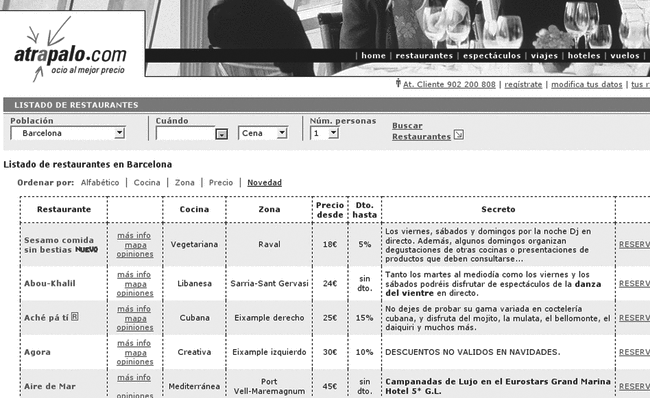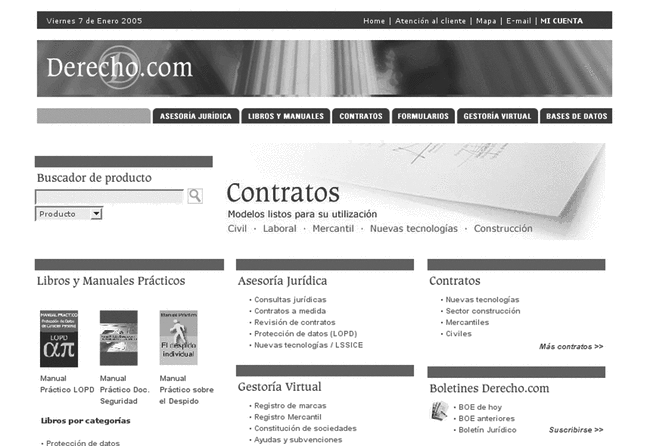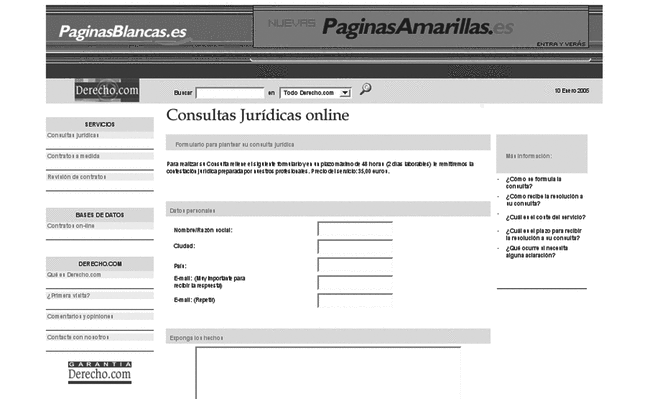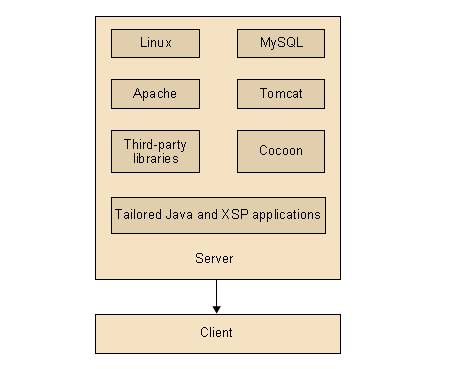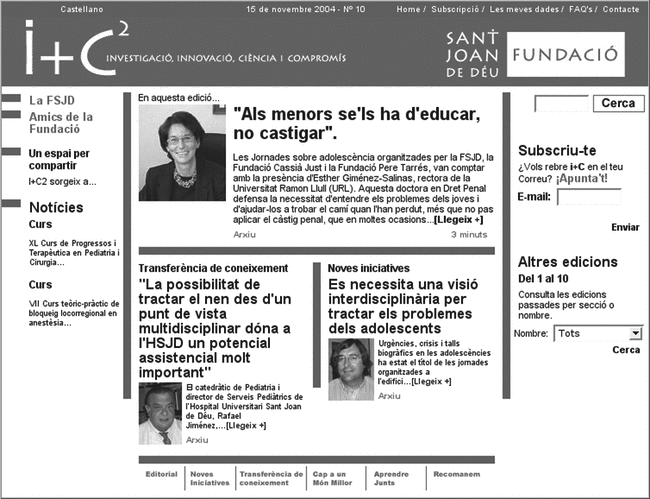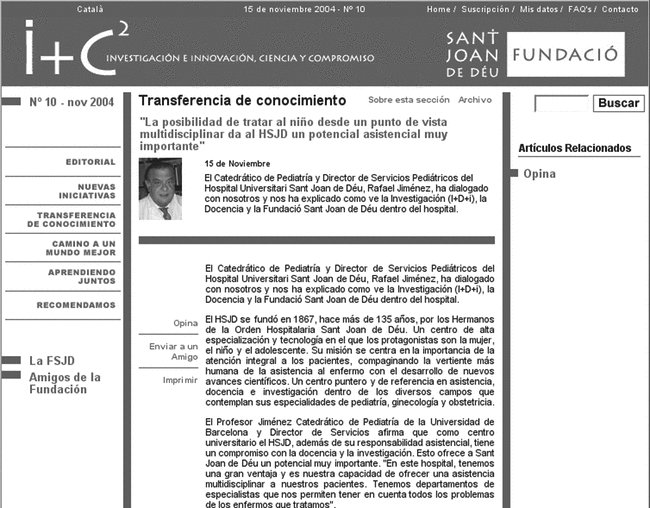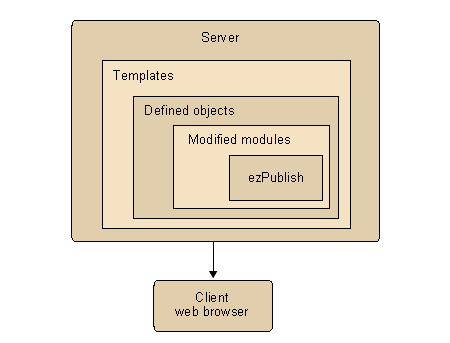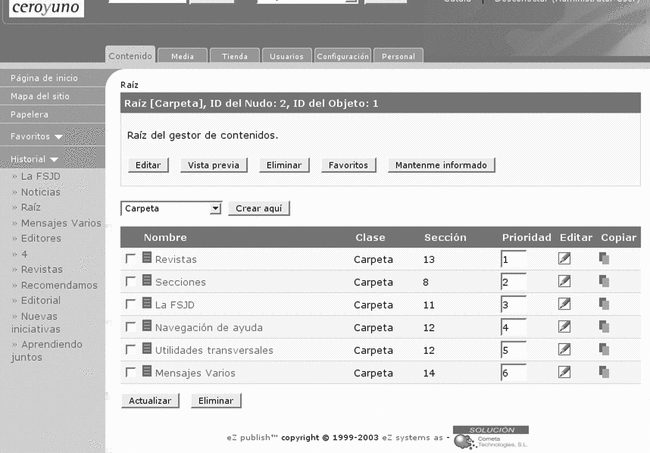This chapter will look at open source software from a business angle, using the real case of an SME, Cometa Technologies, that uses it intensively.
As we will explain, when a company chooses to use free software in the technology solutions it adopts, it opens itself up to a series of benefits that would not otherwise exist or be so obvious. For example, the use of free source software results in cost savings, supplier independence, shorter development times, etc. With open source solutions, the suppliers of related services also reap the benefits.
Free software offers a myriad of possibilities to companies wishing to provide related solutions. This chapter will describe the basic services that Cometa Technologies offers to its clients in order to help them rise to their challenges: development and integration of projects based on the use of free software tools, and training and consulting on the subject.
The cases described in the different sections show how Cometa Technologies uses free software in projects for very diverse companies. They show how this type of solution is now a real alternative to those based on proprietary software.
At the end of the chapter, the student should:
-
understand the basics of the business model of Cometa Technologies, as an example of an SME that bases a considerable proportion of its business on the use of free software;
-
understand the business benefits of an intensive use of open source tools, from the point of view of a technology solutions provider and from that of clients;
-
be able to reflect on the main services associated with free software that companies can offer; and
-
be familiar with real examples of free software in diverse business sectors.
Cometa Technologies is a private sector company that provides information technology solutions based on free software tools and standards.
Broadly speaking, Cometa Technologies offers two lines of services to clients:
-
Development and integration of technology solutions. This line of solutions is designed to fully adapt to the functional needs of clients and to make the most of the products available in order to minimise development and implementation time.
-
Training and consulting. This line of solutions has been designed to equip clients with the knowledge to choose the right technologies, know their possibilities, and use them.
The staff of Cometa Technologies are experts in information technologies and in using them to solve real business problems. With its knowledge of the free software movement (philosophy, aims, available tools, etc.), Cometa Technologies can help its clients to tackle their concerns by applying and integrating the most appropriate technologies into long-term reliable solutions at economical rates.
Cometa Technologies was founded to bridge the gap between the free software community (their knowledge of the tools that they have produced, how they relate to each other, which ones are the most interesting, etc.) and companies (which need turnkey solutions with subsequent maintenance).
This knowledge and its application constitute the core competency of Cometa Technologies, a skill that sets it apart from its competitors and gives it an edge, since:
-
it offers potential access to a wide variety of markets;
-
it increases the benefits for clients; and
-
it is difficult to imitate.
Given that Cometa Technologies offers solutions through the use of technology, we will now describe the main technical features of the projects that it carries out:
-
Reliability and scalability. The solutions provided by Cometa Technologies are stable, always function as planned and can grow with the client company.
-
Application of the most appropriate technologies. The Cometa Technologies team is aware of the possibilities of the various technologies available at any given time and is thus able to apply the most appropriate one to each case.
-
Use of free software tools. Cometa Technologies specialises in the use of this type of tool, which means that it can take full responsibility for their correct operation and incorporate their advantages into the projects in which it participates.
-
Use of standards. Cometa Technologies uses technology standards wherever possible, both in the solutions it develops internally (tailored development) and in those incorporating third-party products (open source project integration).
The life cycle of a Cometa Technologies project generally encompasses the following phases:
-
Initial study in conjunction with the client of the new needs and possible ways of meeting them.
-
Drafting of a proposal that sets down the general lines of the suggested solution and the time/staff required to carry it out, together with a financial appraisal.
-
Design of the solution, including a detailed analysis of free software tools and standards that could be used to add value to the project (shorter development time, enhanced security, etc). In this phase, constant communication with the client is critical for the validation of partial results.
-
Acceptance and implementation of the solution with a strong focus on the training of the users or technicians who will be involved in the everyday operation of the solution so that it can be used to its best advantage.
-
Maintenance of the solution to guarantee correct operation (corrective maintenance) and evolution (upgrade maintenance), depending on the needs of the client.
Cometa Technologies also markets its knowledge and expertise in certain areas of IT in a variety of ways: consulting, training, etc.
Note
The "Solutions offered" section contains a detailed description of the solution development phase of the project life cycle and the different approaches taken.
To sum up, we could say that the aim of Cometa Technologies is to offer a quality service to its clients, which means emphasising the following points in particular:
-
Accessibility and communication. Clients are able to contact Cometa Technologies easily for the hire of its services. Communication with clients is fluid and constant and uses a language that both parties can understand (which is not always easy when talking about technology).
-
Quick response. Clear willingness to respond and provide a quick service based on the description of the client's needs.
-
Understanding of clients. Efforts are made to assimilate and deal with the needs of clients.
Note
Understanding of clients and professionalism are key to the activities of Cometa Technologies: the aim is to generate benefits for the client.
-
Professionalism. Cometa Technologies has and uses the knowledge to propose the best solutions and implement them effectively.
-
Credibility and reliability. The company portrays an honest image based on getting the job done well with total transparency and on providing the promised solutions (which work as planned) by the agreed deadline.
-
Security. With the service provided by Cometa Technologies, clients do not feel that they are taking risks of any sort and there are no pitfalls or concerns about the service provided.
Its use of open source and standards allows the company to offer some of the service features described above, particularly those concerning factors such as reliability, professionalism and security, which can help to enhance the overall sense of quality perceived by the client.
In this climate of economic instability and constant technological change, all firms, whether small businesses or big corporations, face challenges in this area:
-
Reducing the time to project launch from its conception. Information technology projects have to produce short-term results: we need to see the benefits of our actions and investments in a short space of time.
-
Improving integration with other systems. Companies increasingly find themselves with inherited components in information technologies (rarely do they start from scratch), so project success is not simply about obtaining the expected results in isolation but rather that the project integrates seamlessly with the other technology used in the various business processes of the company.
-
Increasing security. Companies need to prevent the theft of confidential information, keep their technology systems running around the clock, guarantee the privacy of the data they handle, etc. In our increasingly complex technological environments, security has become one of the chief concerns of many companies.
-
Maintaining independence from suppliers. Companies are becoming increasingly interested in remaining independent from their technology suppliers in order to avoid situations (as has occurred in the past) in which suppliers, seeing that their clients are in no position to make demands of them, tend not to meet their needs as they once did (for instance, putting up their prices for no apparent reason).
-
Improving the use of technology solutions, taking into account that they are used in different countries and cultures. It is increasingly common for companies to have systems used by international teams. Technology projects, like all other company actions, must take into account the need to adapt to this variety of circumstances.
-
Cutting costs. The pressure is on to cut the TCO ( total cost of ownership ) and increase the ROI ( return on investment ) of projects carried out in our uncertain economic climate.
Since Cometa Technologies provides solutions through the use of information technologies, it needs to respond to the challenges faced by its clients. As explained earlier, the use of free software tools and standards allows Cometa Technologies the possibility of enhancing the quality of the services it offers and equips it with the know-how to help deal with these challenges. The following sections will look at each of these points in turn.
Free software provides us with the source code, which can be freely redistributed and modified. Thousands of people around the world create and maintain free software and millions more use it on a daily basis.
The advantages of basing solutions on free software for Cometa Technologies and its clients include:
-
Increased reliability and security. The use of free software improves security, particularly because:
-
It offers greater transparency: anybody can detect and fix bugs; a peer review process is used for this purpose.
-
There are more privacy guarantees, since code audits can be carried out (this is impossible or difficult to do with proprietary software.
-
It allows independence from suppliers: a client company can freely decide to terminate relations with a supplier if dissatisfied with its services. The company will not find itself trapped again because it has everything it needs to continue the project alone or with a new supplier.
-
-
Enhanced performance and scalability. In some cases, we can use free software tools to take full advantage of hardware that would otherwise be regarded as obsolete or which would be under-used. Scalability is guaranteed through the various free software applications (ones that normally perform critical functions in a solution) equipped to grow with the problem we are dealing with (all without having to pay for new licences, extend existing ones, upgrade professional versions to enterprise editions, etc).
-
Absolute flexibility and freedom. The use of free software tools helps to reduce the time between the conception of a project and its launch because software components – and their source code – that have already been developed can be reused (with no purchase fees). Hence, this code can be adapted to the specific needs of individual clients. The ability to modify existing tools also means that they can be adapted for different countries and cultures.
-
Savings in purchase fees and maintenance. These savings are made because there are no purchase fees for the various software tools used (libraries, database engines, content managers, web servers, etc). Hardware purchase costs are slightly lower and maintenance costs could also be reduced because of increased security, the absence of recurrent licence expenses (which add no real value to the solution), etc.
The following is a list of some of the open source tools that Cometa Technologies regularly uses in the solutions it designs:
-
Databases: MySQL ( http://www.mysql.com/ ), PostgreSQL ( http://www.postgresql.org/ ).
-
Operating systems: different GNU/Linux distributions, such as RedHat, ( http://www.redhat.com/ ) and Debian ( http://www.debian.org/ ).
-
Web servers and applications: Apache ( http://httpd.apache.org/ ), JBoss ( http://www.jboss.org/ ), Tomcat ( http://jakarta.apache.org/tomcat/ ), Cocoon ( http://xml.apache.org/cocoon/ ).
-
Office productivity: OpenOffice ( http://www.openoffice.org/ ), DocBook ( http://www.docbook.org/ ).
As with the use of free software applications, intensive use of standards can help improve the quality of the solutions offered and meet the challenges of Cometa Technologies' clients.
Free software and standards are clearly complementary. We understand standards in the broadest sense of the word to mean:
-
de jure standards. Standards approved by an organisation set up for their formal definition, such as ISO ( http://www.iso.org/ ).
-
Open standards. Standards approved by consensus and public acts for use by any company, such as those defined by OASIS, Organization for the Advancement of Structured Information Standards ( http://www.oasis-open.org/ ).
-
de facto standards. Standards adopted as a result of their extended use and general acceptance, such as the PDF format created by Adobe ( http://www.adobe.com ).
-
Proprietary standards. Standards controlled by a particular company that are not made public for use by other companies, such as some Microsoft file formats ( http://www.microsoft.com ).
As far as possible, free software projects will generally use existing standards because they coincide with many of its aims, such as reuse and interoperability. Indeed, it is increasingly common to come across organisations that create standards developing reference implementations for these, which they release under one of the existing free software licences.
By using standards in the fields in which it implements solutions, Cometa Technologies can:
-
Make the most of the experience and know-how of others in their respective fields of business or technology. This results in lower project costs because better solutions are reached in less time.
-
Offer interoperability and ease of integration with other systems. The use of standards allows improved and easier connection of new systems to existing ones through the use of standards common to both.
-
Reuse existing tools or create new ones that can be reused in the future, with the associated cost savings. Many standards have reference implementations or associated free software projects, meaning that when we use them, not only do we benefit from their inherent advantages, but we also obtain access to a series of tools that have already been developed and tested.
-
Maximise the longevity and growth capacity of developments. By using standards, we are encouraging the future evolution of solutions because they are supported by a series of elements (specifications, free and open source implementations, etc.) that improve by themselves, allowing integration with new elements that did not exist or were unknown at the time.
The technology standards regularly used by Cometa Technologies include:
-
Presentation of information: XHTML ( http://www.w3.org/TR/xhtml1/ ), PDF ( http://www.adobe.com/ ), SVG ( http://www.w3.org/Graphics/SVG/ ), VoiceXML ( http://www.voicexml.org/ ), WML ( http://www.openmobilealliance.org/ ).
-
XML and web services: XML ( http://www.w3c.org/XML/ ), XSL ( http://www.w3.org/Style/XSL/ ), SOAP ( http://www.w3.org/2000/xp/Group/ ), WSDL ( http://www.w3.org/2002/ws/ ), UDDI ( http://www.w3.org/2002/ws/ ).
-
Programming languages: Java ( http://java.sun.com/ ), Perl ( http://www.perl.com/ ), PHP ( http://www.php.net/ ), JavaScript ( http://www.ecma-international.org/ ), C ( http://std.dkuug.dk/JTC1/SC22/WG14/ ), C++ ( http://std.dkuug.dk/JTC1/SC22/WG21/ ).
-
Methodologies and support tools: Métrica 3 ( http://www.csi.map.es/csi/metrica3/index.html ), UML ( http://www.uml.org/ ), Extreme programming ( http://www.extremeprogramming.org/ ).
The solutions offered by Cometa Technologies can be grouped into the following broad areas:
-
Tailored project development based on the use of free software programs and standards.
-
Integration of existing free software applications into new or existing projects.
-
Consulting on the use of different technologies, standards and free software tools.
-
Training in different technologies, standards and free software tools.
Note
The following sections will describe these areas in more detail, analysing the advantages that they can offer to clients using the example of a real case for each.
The services offered by Cometa Technologies relate to the company's knowledge of information technologies and the specific development (in the broadest sense of the word) of projects in the framework of free software tools and standards. Hence, its services are merely different ways of utilising this knowledge, i.e. of maximising its use of the skills that constitute competitive advantages for the company.
This knowledge has become even more valuable in the light of the current use of free software solutions in companies, which are facing the following problems:
-
Lack of support, whether because they lack qualified staff or because there are no stable organisations that can provide support to projects. Cometa Technologies offers the possibility of outsourcing projects and carrying out their subsequent maintenance (hence assuming responsibility for them) or of passing on the necessary know-how so that companies can carry out this task internally. Besides its training and consulting services, Cometa Technologies affords help to companies for selecting and discovering which free software projects will obtain greater success now and in the future, in order to minimise the risks involved in their adoption.
-
Immature business models. The projects carried out by Cometa Technologies are guaranteed by the experience it has accumulated over the years in information technologies, specifically in free software, for which it can cite many success stories.
-
Lack of applications or immature applications, supported by de facto standards. With its consulting service (whether in isolation or as an integral part of a large-scale project), Cometa Technologies helps its clients to find and use the most mature and stable free software applications, complementing them where necessary – hence contributing to the evolution of the tool through its development and integration services – and taking responsibility for its correct operation.
-
A lack of organisations that can systematise free software diffusion and training. Cometa Technologies offers a training service tailored to client needs that provides specific information on given areas (mainly standards and free software tools). In addition, the UOC offers the possibility of obtaining a generic but very comprehensive background in free software with its International Master's Degree in Free Software.
The tailored development services offered by Cometa Technologies consist of the design and implementation of solutions adapted to the specific needs of its clients, with the most suitable technologies for meeting these needs and an intensive use of free software tools and standards.
The main tasks carried out by Cometa Technologies for its tailored projects are:
-
Project management: Cometa Technologies plans, controls and monitors the project outsourced by the client.
-
Feasibility study: Cometa Technologies carries out a study prior to the project launch to confirm its financial and technical feasibility, among other aspects.
-
Analysis: in conjunction with the client, Cometa Technologies conducts a functional analysis of the project, i.e. it specifies the business requirements that need to be met.
-
Design: Cometa Technologies obtains the models and specifications defining the technology project based on the functional analysis performed with the client. The various free software solutions to be used and standards to be followed will be introduced at this stage.
-
Construction: Cometa Technologies takes care of the technical development of the project, for which it uses free software tools such as frameworks, libraries, services, etc. Each of the modules required to meet the business requirements are developed and the necessary unit and integration tests are conducted.
-
Implementation: together with the client, Cometa Technologies takes the developed systems to the production stage, carrying out any migrations and the appropriate implementation tests. It is during this phase that training is carried out for the end users and technicians of the client company who will be using or carrying out maintenance of the developed solution.
-
Maintenance: once the developed project has been accepted, Cometa Technologies takes over its maintenance, which may be corrective or upgrade, depending on the level of service agreed with the client.
To carry out these tasks, Cometa Technologies uses free software programs, either with the express knowledge of the client when these tools form part of the solution provided (such as use of a database management system like MySQL or web service programming libraries like Apache Axis), or without it, reporting only the results obtained (such as project planning using Planner or writing up of project documentation with DocBook).
Once the system developed to meet the needs of the client has been accepted, Cometa Technologies provides the client with the full source code for the solution. This code can then have one of the following destinations:
-
Release via the projects of the free software tools used in the solution. Cometa Technologies maintains a strong commitment to free software so any development produced for a client will adhere strictly to the licences for the tools used. The changes made to the free software tools used in the projects (bug fixing, new features, etc.) are released under the corresponding licence and sent for incorporation into the aforementioned tools (with the corresponding benefits for the client of the solution).
-
Non-release, if the client so wishes. The source code developed specifically by Cometa Technologies for a given solution, which is not subject to compulsory release under any licence, will remain in the hands of the client. The client is thus the proprietor of the code and may decide not to release it for a variety of reasons.
-
Release, if the client so wishes. Cometa Technologies always encourages its clients to release the source code of the developed projects that they own exclusively, explaining the advantages of the free software development model over proprietary alternatives.
Atrapalo.com
The private sector company Atrapalo.com ( http://www.atrapalo.com ) bases its business on e-commerce with the promotion and placement of surpluses from the leisure sector (flights, hotels, car rental, shows, etc.), transforming them into offers on the Internet.
Cometa Technologies developed the restaurant table booking system of the Atrapalo.com website using the site's technology platform and diverse free software tools.
The table booking system was approached from the outset as a tailored project, given that it had to be fully integrated into the Atrapalo.com system, using the existing technological infrastructure and maintaining its technical approach. The end result was a series of applications based on the use of open source tools (including PHP and MySQL) that met the needs of the client.
The tool integration services offered by Cometa Technologies use existing free software solutions that are parameterised to adapt them to the features of client businesses. The basic tasks carried out by Cometa Technologies in its tool integration projects are the same as those for a tailored development.
The integration of free software tools, in contrast to tailored development services, is not limited to the use of libraries, middleware, and so on, as it uses projects that can cover entire functional areas simply by parameterisation or with very specific changes.
Cometa Technologies offers complete solutions based on the use, parameterisation and customisation of open source content managers, such as ezPublish ( http://www.ez.no/ ) and monitoring tools, as Nagios ( http://www.nagios.org/ ).
By starting out with mature final solutions that have been tested by teams the world over and whose source code is available under a licence allowing its modification at no extra cost, Cometa Technologies can offer solutions tailored to the needs of its clients while minimising the time and cost of development.
BJC Diálogo
BJC Diálogo ( http://www.bjc-dialogo.com/ ) is a subsidiary of BJC that markets intelligent technical home management systems to automate and manage power in small or medium-sized homes and to control the facilities on sales premises and in hotels and offices.
Together with the Grasa Studio company ( http://www.grasa.net/ ), Cometa Technologies developed the corporate website of BJC Diálogo, where users can request information on tailored projects, find out news and discover innovations, access the company product brochure, read about domotics, etc.
The integration services offered by Cometa Technologies were the perfect partner for the BJC Diálogo corporate website, since the client's needs could largely be met by the use of free software applications developed essentially for content management.
Based on the graphic design provided by Grasa Studio, a series of templates were made; these templates were used with ezPublish, a free content manager. ezPublish needed some modifications and the addition of new modules to fully meet the specifications agreed with the client but a complete solution was provided in less time than would have been needed if development had been carried out from scratch, which also reduced the financial cost of the project.
The consulting service offered to clients by Cometa Technologies consists of providing professional support in decision-making processes within its specialist areas.
Note
Cometa Technologies mainly provides advice on the selection, use and adaptation of free software solutions and standards, and on certain technologies in which it has expert knowledge.
Through its consulting service, Cometa Technologies furthers the knowledge of its clients in specific areas allowing them to take more informed decisions and make the most of certain technologies, tools and standards, which they can use to their full advantage in their business.
Cometa Technologies has helped clients in areas such as security in environments that make intensive use of free software solutions, particularly GNU/LINUX, e-learning standards such as ADL SCORM ( http://www.adlnet.org/ ), security improvements and optimised performance of specific tools such as Apache web server or the Tomcat applications server.
Contex Scanning Technology A/S
Contex Scanning Technology A/S ( http://www.contex.com/ ) is a multinational with head offices in Denmark. The company produces and markets plotters and scanners for professionals.
Cometa Technologies provides technological security consulting services to Contex Scanning Technology A/S and audits some of its products in this field.
Cometa Technologies conducts two types of security audit for Contex Scanning Technology A/S: monthly, designed to check the security of the system, taking into account its various points (operating system, services offered, etc.), and one-off, of a wider scope, before release of the audited product (generally every nine months).
The audits generate documents and sets of tests as output that inform the client of possible security issues with its products, if applicable: how a potential attacker might take advantage of them and what risks they would pose. The audits require the performance of security tests for the various free software tools used by Contex Scanning Technology A/S in its products and the use of free software applications used to verify system security, such as Nessus ( http://www.nessus.org/ ).
With its training service, Cometa Technologies transfers its knowledge of specific technological areas (free software tools, standards, etc.) to the staff of its clients.
The purpose of this training is to equip staff at the client company with the skills for understanding and using certain technologies, free software tools and standards that could generate competitive advantages.
Cometa Technologies provides systematic and rigorous training based on the programme agreed with the client and tailored to the specific needs of the latter. In addition to the knowledge gained by the company staff who participated in the training, this service also includes a complete set of documentation describing the issues dealt, which can be used as reference at a later date. Where the client gives its express consent – always with the encouragement of Cometa Technologies – this documentation is released under an open licence, such as GFDL, GNU Free Documentation License ( http://www.gnu.org/copyleft/fdl.html ) or Creative Commons ( http://creativecommons.org/ ).
Universitat Oberta de Catalunya (UOC)
The Universitat Oberta de Catalunya (Open University of Catalonia) is an institution that offers ongoing training to individuals. The subjects offered by the UOC include the International Master's Degree in Free Software, one of whose courses includes this material.
Cometa Technologies assists the UOC and the education of its students through its consulting services and by auditing the materials of various courses that form part of the university's International Master's Degree in Free Software.
The task covers the design of materials for courses that make up the International Master's Degree in Free Software, which include: Databases., Advanced software development concepts. These are released with the UOC's consent under the GNU Free Documentation License. Some of the staff of Cometa Technologies also act as consultants on a number of courses for the degree.
Given Cometa Technologies' commitment to free software and all that it entails, as one might imagine, the company's entire computer infrastructure is based on this type of solution.
The advantages of the use of free software applications for Cometa Technologies over proprietary alternatives are exactly the same as the ones it offers to its clients: greater flexibility, increased security, enhanced performance, cost savings, compliance with standards, etc.
The IT infrastructure of Cometa Technologies can be divided into the following broad areas:
-
Basic infrastructure: tools for the everyday, basic operation of the company.
-
Collaboration: tools for communication between company staff and between the latter and others (clients, for instance).
-
Workstations: tools on the computers used by those who work at the company.
The following sections will describe each of these areas in detail and analyse the free software tools used in each case.
The basic IT infrastructure of Cometa Technologies allows it to carry out the basic operations necessary for the everyday running of the company, which include correct connection of the computer network to the Internet, sharing of files stored on central servers (which require backups to be made), etc.
The table below summarises the main software components used in the basic IT infrastructure of Cometa Technologies:
|
Type of application |
Solution used |
|---|---|
|
Operating system |
GNU/Linux |
|
Print server |
Common UNIX Printing System |
|
Routing |
route (GNU/Linux OS kernel) |
|
Firewall |
iptables (GNU/Linux OS kernel) |
|
DNS server |
ISC BIND |
|
DHCP server |
ISC DHCP Server |
|
Proxy cache |
Squid |
|
File server |
Samba |
|
Backups |
Amanda |
|
Directory service |
OpenLDAP |
The collaboration aspect of the IT infrastructure of Cometa Technologies uses tools for setting up channels of communication between company staff or between company staff and external agents (clients, suppliers, etc). These include the usual applications for Internet communication such as e-mail, as well as more specific applications to cover the particular needs of Cometa Technologies, perhaps not as common in other types of company.
Project monitoring tool
This application has a web interface and is used to manage aspects of the projects of Cometa Technologies' clients, including functional requirements, detected bugs, related documents, etc. Each user of this tool is assigned a profile (project manager, analyst, programmer, client, etc.) allowing him or her to carry out a series of actions in the areas mentioned. This tool is used to conduct meticulous project status controls and to keep clients informed of the status of their project at all times.
The table below summarises the main software components used in this area:
|
Type of application |
Solution used |
|---|---|
|
E-mail server |
Postfix, IMAP |
|
Fax server |
HylaFAX |
|
Project monitoring tool |
Mantis |
|
Web server |
Apache |
|
Database management system |
MySQL |
|
Content management |
ezPublish |
|
Version control system |
Subversion |
Workstations are the computers, both laptops and desktop computers, used by the staff of Cometa Technologies. These individuals are assigned different profiles depending on the tasks that they perform (project management, marketing, technical development, etc.), but all of the workstations have the same basic setup, which only varies in the applications that they normally use.
Since all of the applications are free software and there are no licence fees payable for each workstation, user, etc., all applications are installed on all computers for convenience (any user can use any company computer and have access to all of the applications he or she needs).
The table below summarises the main software components installed on a basic workstation at Cometa Technologies:
|
Type of application |
Solution used |
|---|---|
|
Operating system |
GNU/Linux |
|
Office automation suite |
OpenOffice |
|
E-mail client |
Thunderbird |
|
Web browser |
Firefox |
|
Image editor |
Gimp |
|
Audio and video player |
Kaffeine |
|
Instant messaging client |
Kopete |
|
Personal information manager |
Evolution |
|
CD and DVD burning tool |
K3b |
|
Integrated development environment |
Eclipse |
|
Version control system |
Subversion |
|
Project planning |
Planner |
|
Diagram creation tool |
Dia, Umbrello |
The following section describes the tailored project carried out by Cometa Technologies for the Derecho.com legal site ( http://www.derecho.com/ ).
Derecho.com is a company providing quality legal services and content over the Internet to allow its clients to solve their legal issues, offering the possibility of consulting databases, asking questions about legal issues, looking up legislation and purchasing contract templates and case forms, among other services.
Derecho.com is a vertical legal website. Since its creation, Derecho.com has entrusted Cometa Technologies with the development and maintenance of the technology platform on which its business is based.
When the site was set up in 1999, the following aims were identified as essential:
-
Ability to display the information managed on the site on different platforms (PCs, mobile telephones, PDAs, etc).
-
Possibility of looking up content in different views for their transparent integration into third-party websites ( co-branding ).
-
High availability: the platform had to be operative all day, every day.
-
High performance: the platform had to support the concurrent access of hundreds of users and maintain reasonable response times.
-
Minimal development and maintenance costs.
In order to meet the chief aims for content management, the decision was made to base the entire solution on XML for representing the information.
The contents are extracted from a database and expressed in XML. By transforming it using style sheets (XSL), the content is represented in diverse languages (XHTML, WML, XML, etc.), allowing it to be displayed on a range of platforms.
This process also adapts the graphic representation of the information to its destination. For example, a web page might be displayed differently depending on whether it is aimed at users of the Derecho.com site or users who consult it through other sites with which Derecho.com has set up agreements.
To maximise the stability and performance of the platform and to save on development and maintenance costs, it was decided to use free software solutions, which included:
-
GNU/Linux: operating system of the diverse servers housing the solution.
-
MySQL: relational database management system storing all of the information.
-
Apache and Tomcat: web server and servlet container on which the various applications are run.
-
Cocoon: framework that facilitates and optimises the job of working with XML documents and XSLT operations.
-
Third-party libraries.
The following sections describe the integration project carried out by Cometa Technologies and 0 y 1 Factoría for I+C2 magazine ( http://www.fsjd.org/cat/ic2.php ), published by the Sant Joan de Déu Foundation ( http://www.fsjd.org/ ).
The Sant Joan de Déu (FSJD) Foundation is a non-profit organisation created by the monastic order of San Juan de Dios (Province of San Rafael) to set up an area of action for the convergence of synergies in teaching and research between the diverse centres and professionals that form part of the Order, particularly in Catalonia but without excluding those from other parts of Spain or even abroad.
The professional services firm 0 y 1 Factoría with which Cometa Technologies developed the project specialises in detecting innovations, stimulating creativity and coming up with distinctive digital spaces.
The online I+C2 (Investigación, Innovación, Ciencia y Compromiso or Research, Innovation, Science and Commitment) newsletter is an initiative of the Sant Joan de Déu Foundation designed to stimulate awareness and raise the profile of different innovative initiatives being carried out in research, teaching and social development within this institution.
Cometa Technologies was given the task of assisting the Sant Joan de Déu Foundation in the development and maintenance of the technology platform on which publication of the I+C2 magazine is based, working in collaboration with 0 y 1 Factoría, which was responsible for the creation, editing and publication of the newsletter contents.
The aims of the project were defined by the end client, the Sant Joan de Déu Foundation, and by the two companies that came up with the final solution, 0 y 1 Factoría and Cometa Technologies. They were:
-
To create a technology platform with basic functionality for the management of an online magazine, including regular e-mails containing online news, the creation of editions grouping these news items, etc.
-
To incorporate certain features that would add value to the newsletter, making the most of its use of the Internet as the channel of publication, such as search engines, customised subscriptions, multiple language support, etc.
-
To allow easy and intuitive maintenance of the information generated by 0 y 1 Factoría or by end client of the solution, the Sant Joan de Déu Foundation.
-
To prepare the solution for upgrade maintenance in a way that would allow the easy addition of new functional features and add value to existing ones.
-
To minimise the financial cost of the solution and the time from the initial proposal to production.
To meet the required aims, it was decided to base the technological solution on the use of a content manager with a free software licence. This would give the team a large base to work with while minimising financial costs and the turnaround time for having the I+C2 newsletter site fully up and running.
The chosen content manager was version 3.3 of ezPublish, the most recent version available when the project was launched. The use of ezPublish necessitated the following tasks:
-
Installation of the ezPublish content manager, integrating it with other elements such as the database engine, web server, etc.
-
Creation of the objects for housing the contents of the website, such as article, edition, news item, subscriber, etc., indicating their attributes and views and taking into account multiple language support.
-
Creation and modification of a series of templates used by the content manager to generate the HTML needed to publish the contents of the website; in this case, the I+C2 magazine.
-
Creation and modification of a series of additional templates that the content manager uses for website content services, such as the search engine, important news, etc.
-
Modification of certain content manager modules to add features that did not originally exist and are typical of an online magazine (grouping of articles in editions, management of user subscriptions and personal data, regular e-mailing of the newsletter, etc).
As explained above, the solution developed was based on the use and modification of ezPublish as a content manager of the I+C2 newsletter site. This application and those created specifically for the project were based on other free software applications, generating a stack of coordinated software that integrated a platform with the characteristics mentioned earlier in this module (reliability, security, low cost, etc).
Some of the tools used were:
-
GNU/Linux: operating system of the server housing the solution.
-
MySQL: relational database management system for storing all of the information used with the content manager.
-
PHP: interpreter for the script language used by the content manager and the modifications that Cometa Technologies made to it.
-
Apache: web server.
-
ezPublish: content manager using the GPL licence.
-
Third-party libraries.
This chapter has looked at the case of Cometa Technologies, a private sector company that provides information technology solutions based on free software tools and standards.
Cometa Technologies offers its clients services in areas in which the company has an excellent knowledge:
-
Development and integration of technology solutions based on the use of free software tools and standards.
-
Training and consulting in specific technologies, free software tools and standards.
With these services, Cometa Technologies attempts to tackle the challenges of information technology projects faced by organisations today:
-
Reducing the time to project launch from its conception.
-
Improving integration with the company's other systems.
-
Increasing system security.
-
Maintaining independence from suppliers.
-
Improving the use of technology solutions while taking into account different countries and cultures.
-
Cutting the final costs of solution ownership.
The use of free software solutions is an important step in this direction because they offer the following advantages:
-
Reliability and security.
-
Enhanced performance and scalability.
-
Flexibility and freedom.
-
Savings on purchase and maintenance costs.
We have looked at Cometa Technologies as an example of a company that bases its entire computing infrastructure on the use of free software solutions. With the same aim, we described two case studies of the application of this type of solution (Derecho.com and the Sant Joan de Déu Foundation), which used the tailored project development and integration services, respectively.

